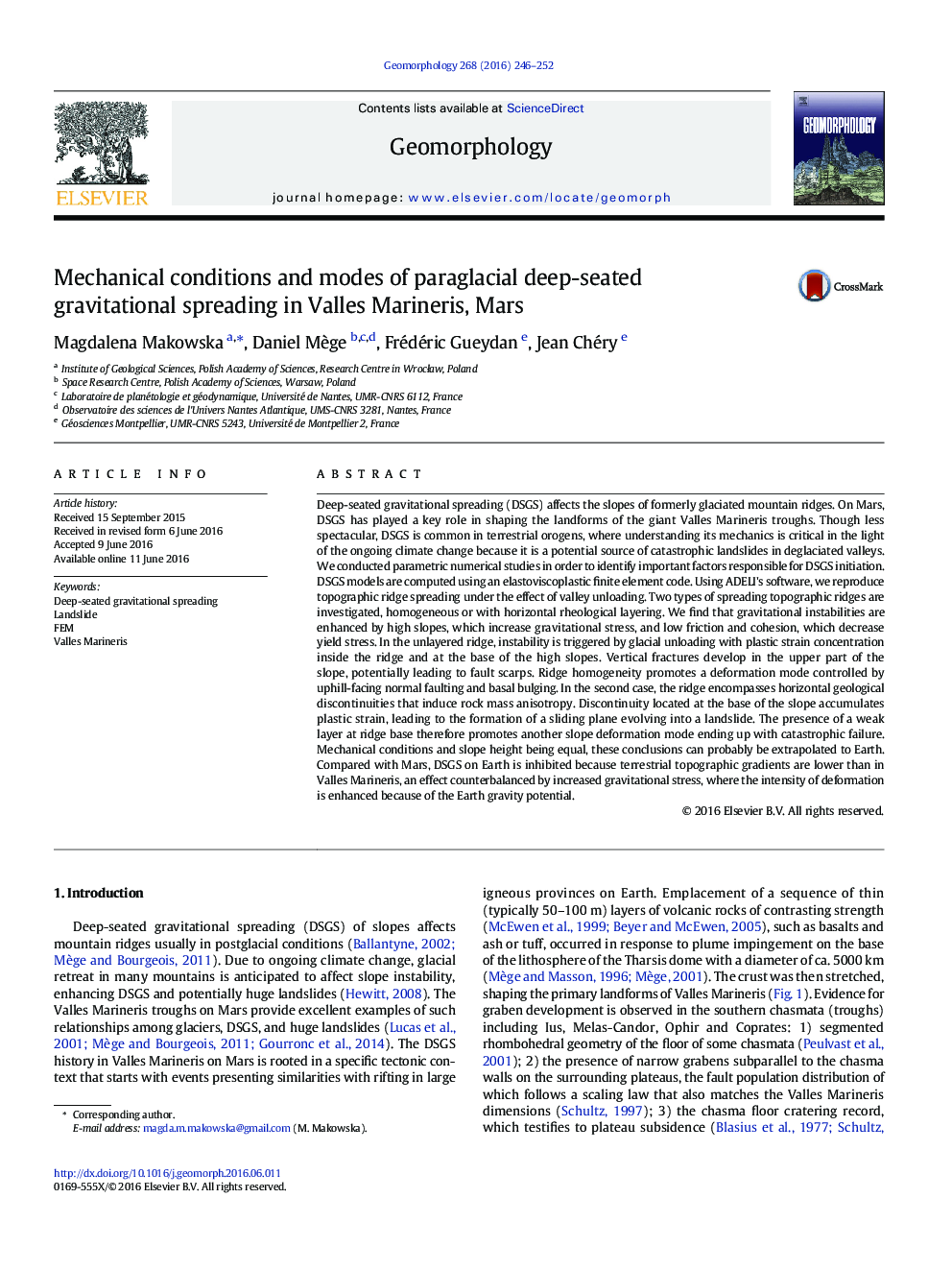| کد مقاله | کد نشریه | سال انتشار | مقاله انگلیسی | نسخه تمام متن |
|---|---|---|---|---|
| 4683977 | 1635381 | 2016 | 7 صفحه PDF | دانلود رایگان |
• We model Deep-Seated Gravitational Spreading in Valles Marineris using FEM.
• Glacial unloading, rheology and geological discontinuities were considered.
• Type of deformation strongly depends on layering, friction and slope inclination.
• Results for unlayered rock reproduce DSGS in Valles Marineris.
• Landsliding develops in layered rock.
Deep-seated gravitational spreading (DSGS) affects the slopes of formerly glaciated mountain ridges. On Mars, DSGS has played a key role in shaping the landforms of the giant Valles Marineris troughs. Though less spectacular, DSGS is common in terrestrial orogens, where understanding its mechanics is critical in the light of the ongoing climate change because it is a potential source of catastrophic landslides in deglaciated valleys. We conducted parametric numerical studies in order to identify important factors responsible for DSGS initiation. DSGS models are computed using an elastoviscoplastic finite element code. Using ADELI's software, we reproduce topographic ridge spreading under the effect of valley unloading. Two types of spreading topographic ridges are investigated, homogeneous or with horizontal rheological layering. We find that gravitational instabilities are enhanced by high slopes, which increase gravitational stress, and low friction and cohesion, which decrease yield stress. In the unlayered ridge, instability is triggered by glacial unloading with plastic strain concentration inside the ridge and at the base of the high slopes. Vertical fractures develop in the upper part of the slope, potentially leading to fault scarps. Ridge homogeneity promotes a deformation mode controlled by uphill-facing normal faulting and basal bulging. In the second case, the ridge encompasses horizontal geological discontinuities that induce rock mass anisotropy. Discontinuity located at the base of the slope accumulates plastic strain, leading to the formation of a sliding plane evolving into a landslide. The presence of a weak layer at ridge base therefore promotes another slope deformation mode ending up with catastrophic failure. Mechanical conditions and slope height being equal, these conclusions can probably be extrapolated to Earth. Compared with Mars, DSGS on Earth is inhibited because terrestrial topographic gradients are lower than in Valles Marineris, an effect counterbalanced by increased gravitational stress, where the intensity of deformation is enhanced because of the Earth gravity potential.
Journal: Geomorphology - Volume 268, 1 September 2016, Pages 246–252
